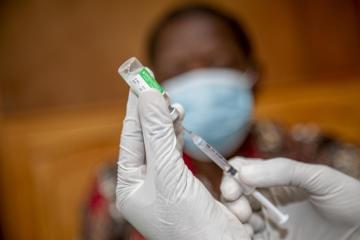Halloween safety: Tips for trick-or-treaters
Make Halloween safety part of your holiday fun. Start with these practical Halloween safety tips.
Children love Halloween because of the costumes and treats. But the holiday also brings serious safety risks. Kids are twice as likely to be hit by a car on Halloween as they are other nights of the year. Burns and cuts also are common on Halloween, and then there are problems caused by candy.
Halloween can be safely enjoyed — especially when parents put care into planning and supervision. Follow these tips to keep your family safe.
Carve safely
Before you decorate your pumpkins, consider these safety rules:
- Consider alternatives to carving. Decorate with markers, glitter glue or paint. Let young children draw faces on pumpkins with art supplies. Leave carving to an adult.
- Use candles with care. Place candlelit pumpkins on a sturdy surface away from curtains and other flammable objects. Never leave candlelit pumpkins unattended. Better yet, light pumpkins with flashlights, battery-operated flameless candles or glow sticks instead.
Get clever with costumes
Choosing costumes wisely is an important part of Halloween safety. Follow these tips:
- The brighter the better. Choose bright colors and flame-retardant materials. If your child will be outdoors after dark, attach reflective tape to his or her costume or treat bag.
- Size it right. If it’s chilly outdoors, make sure your child’s costume is loose enough for warm clothing to be worn underneath — but not long enough to cause tripping. Avoid oversized shoes and high heels.
- Skip the masks. A mask can obstruct your child’s vision, especially if it slips out of place. Use nontoxic makeup instead.
- Limit accessories. Pointed props — such as wands, swords and knives — might pose safety hazards.
Trick or treat with care
Before your children start trick-or-treating, review these safety rules:
- Get in on the fun. Accompany trick-or-treaters younger than age 12. Pin a piece of paper with your child’s name, address and phone number inside your child’s pocket in case you get separated. Encourage older kids to trick or treat with friends, parents or older siblings. Make sure someone in the group has a flashlight with fresh batteries.
- Set ground rules. If your child will be trick-or-treating without you, plan a familiar route and set a curfew. Review safety rules, including staying with the group, walking only on the sidewalk, approaching only clearly lit homes, and never going inside a home or car for a treat. Have your child carry a cellphone.
- Inspect treats before indulging. Don’t let your child snack while he or she is trick-or-treating. Feed your child an early meal before heading out, and inspect the treats before your child eats them. Discard anything that’s not sealed, has torn packaging or looks questionable. If you have young children, weed out gum, peanuts, hard candies and other choking hazards. If your child has food allergies, check candy labels carefully.
- Ration the loot. If your child collects lots of goodies, consider doling out a few pieces at a time. You might ask your child if he or she would like to swap some — or all — of the candy for something else, such as a toy, book or outing.
Stay safe and sweet on the home front
To prepare for trick-or-treaters:
- Clean up. Put away tripping hazards, such as garden hoses, toys and bikes. Clear wet leaves, snow or other debris from the sidewalk.
- Turn the lights on. Replace burned-out bulbs to ensure visibility at the walkway and front door.
- Control your pets. Take no chances that your pet might be frightened and chase or bite a child at your door.
- Consider sugar substitutes. Instead of handing out sweets, try stickers, fun pencils, rubber insects or colored chalk.
If trick or treating isn’t right for your child, consider planning a candy swap party with friends or neighbors. You might have a food-free costume contest and plan games and prizes. Or check local schools or community centers for other options.
And if you’ll be driving on Halloween, watch for children crossing the street. Be especially careful entering or leaving driveways and alleys. Extra caution can help ensure Halloween safety for everyone.
Sept. 23, 2021
- Halloween food safety tips for parents. U.S. Food and Drug Administration. http://www.fda.gov/Food/ResourcesForYou/Consumers/ucm187021.htm. Accessed June 14, 2019.
- Novelty makeup. U.S. Food and Drug Administration. http://www.fda.gov/Cosmetics/ProductsIngredients/Products/ucm143055.htm. Accessed June 14, 2019.
- Halloween safety tips. American Academy of Pediatrics. https://www.aap.org/en-us/about-the-aap/aap-press-room/news-features-and-safety-tips/Pages/Halloween-Safety-Tips.aspx. Accessed June 14, 2019.
- Halloween safety on and off the road. National Safety Council. http://www.nsc.org/learn/safety-knowledge/Pages/halloween-safety.aspx. Accessed June 14, 2019.
- Avoid the danger of anaphylaxis this Halloween. American Academy of Allergy Asthma & Immunology. https://www.aaaai.org/conditions-and-treatments/library/allergy-library/avoid-anaphylaxis-halloween. Accessed June 14, 2019.
- Halloween health and safety tips. Centers for Disease Control and Prevention. http://www.cdc.gov/family/halloween/index.htm. Accessed June 14, 2019.
- Halloween safety tips. Safe Kids Worldwide. https://www.safekids.org/tip/halloween-safety-tips. Accessed June 14, 2019.
.
Note: This article have been indexed to our site. We do not claim legitimacy, ownership or copyright of any of the content above. To see the article at original source Click Here













